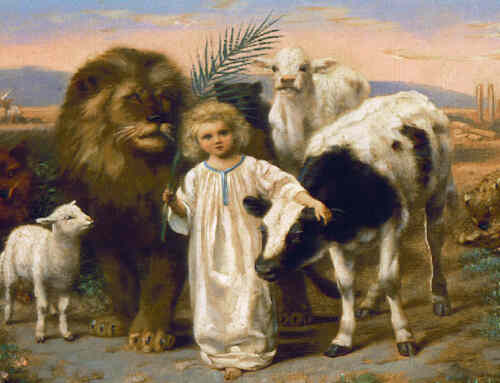The Flood was evidently a global event, but not necessarily a global inundation. The narrative in Genesis chapters 6-9 describes what Noah and his family observed, and it was devastating. All the high hills they could observe were covered. Some have suggested that in addition to the rain from above, which was continual for 40 days, there was a deep surge from what we term today the Persian Gulf that would have quickly, rather than slowly, submerged the area then home to humanity, the area we term Mesopotamia.
That may be suggested in the words of Genesis 7:11: “In the six hundredth year of Noah’s life, in the second month, the seventeenth day of the month, the same day were all the fountains of the great deep broken up, and the windows of heaven were opened.” Notice two sources – the fountains of the “great deep” and also the “windows of heaven.” The last description is evidently about the continuous rain of 40 days. But the “great deep” may refer to the waters of the oceans and seas, disrupted by a world event, with some large pressure pushing the sea south of Mesopotamia upward into the relatively narrow Persian Gulf and strongly overland.
Genesis 11:8 speaks about the population sometime after the flood being “scattered abroad from thence upon the face of the earth,” but there is no such statement about the population of mankind before the flood – suggesting that mankind was not spread over the globe. Thus, the removal of mankind, other than Noah and his family, did not require a flood worldwide.
In Australia, there are animals unique to that isolated area – kangaroos, koala bears, and others, suggesting that the flood did not wipe out all animal life everywhere. Humanity was removed, that is clear from the narrative (Genesis 7:23). And the post-narrative account in Genesis 10 of the dispersion of humanity to wider segments than before would be consistent with mankind before the flood inhabiting a relatively cohesive area of the world, such as Mesopotamia. (Also see Matthew 24:39 and Luke 17:27.)
Mount Everest did not have to be surmounted with water, as there is no testimony that humans lived in the area at the time. The fact that a change of language is only noted following the Flood is another clue that mankind was not so widely distributed before the Flood as subsequently.
That the Flood was a global event that changed circumstances in the atmosphere seems apparent from the sign that appeared after the Flood, namely, appearance for the first time of a rainbow – something common ever since but unique immediately following the flood.
Genesis 1:7, 8 says of the second day of creation, “And God made the firmament, and divided the waters which were under the firmament from the waters which were above the firmament: and it was so. And God called the firmament heaven. And the evening and the morning were the second day.” Some have noticed that only on the second day was the expression “God saw that it was good” missing – suggesting that something was as yet incomplete respecting the “waters above.”
Some have inferred from this that there were large amounts of water above that descended at the time of the flood, during the 40 days of non-stop rain. This seems a credible observation. The change in the atmosphere with waters above descending and rainbows later appearing suggests a global change in the circumstances of earth – thus a global event. But not necessarily a global inundation.














